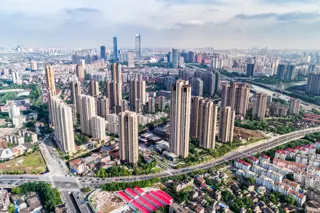How Emerging SEZs Are Transforming Navi Mumbai’s Property Market
 The rise of Special Economic Zones (SEZs) in Navi Mumbai has led to a significant change in the region’s property sector. These zones, created to attract businesses with tax incentives and simplified regulations, are reshaping demand for commercial and residential spaces in key areas like Belapur CBD and Taloja.
The rise of Special Economic Zones (SEZs) in Navi Mumbai has led to a significant change in the region’s property sector. These zones, created to attract businesses with tax incentives and simplified regulations, are reshaping demand for commercial and residential spaces in key areas like Belapur CBD and Taloja.
SEZs: The Economic Catalyst
SEZs function as duty-free zones with streamlined customs protocols, forming hubs for industries from IT to pharmaceuticals. Recent data shows Mumbai’s office SEZs saw an 80% increase in leasing volumes in 2024 compared to 2023. This surge signals strong corporate interest. This demand leads to increased foot traffic and infrastructure investments, directly affecting nearby real estate markets.
Key Factors Driving SEZ Growth
- Strategic Connectivity: Close proximity to projects like the Mumbai Trans Harbour Link (MTHL) and Navi Mumbai Metro improves access to Mumbai and Pune.
- Tax Incentives: SEZs offer duty exemptions and corporate tax deductions, reducing operational costs for businesses.
- Government Support: The Government focused on expanding new metro lines and road networks to reduce traffic congestion.
Hotspots Benefiting from SEZs
1. Belapur CBD: The Commercial Epicenter
Belapur’s Central Business District (CBD) has become a top spot for corporate offices and co-working spaces. With its existing infrastructure and near the upcoming Navi Mumbai International Airport (NMIA), this area attracts:
- IT/ITeS firms: Using Belapur’s connectivity and SEZ status.
- Financial Service Providers: Benefiting from high-quality commercial properties.
- Mixed-Use Developments: Combining offices, retail, and residential units.
Expected Property Trends
- Lease Rentals: Rising due to limited supply of Grade-A commercial spaces.
- Residential Demand: Growing mid-range apartments for professionals working in nearby SEZs.
2. Taloja: Industrial and Residential Nexus
Taloja’s industrial zone, with SEZ policies, has turned into a dual hub for factories and affordable housing. Key developments include:
- Industrial Clusters: Attracting manufacturing firms and logistics companies.
- Budget Housing: Suburban apartments priced lower than core Navi Mumbai areas.
SEZ Synergy
The Taloja SEZ’s industrial activity drives demand for:
- Warehouse Spaces near production units.
- Worker Accommodation in planned residential complexes.
Challenges and Future Outlook
While SEZ growth looks promising for property markets, challenges remain:
- Infrastructure Gaps: Some areas still lack adequate metro links or road connectivity.
- Regulatory Hurdles: Delays in project approvals may slow development.
In the future, the completion of NMIA and expansion of Mumbai 3.0 initiatives will boost SEZ-driven real estate opportunities. Investors and buyers focused on Belapur and Taloja could see high returns as these zones grow into economic powerhouses.